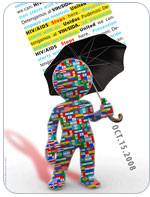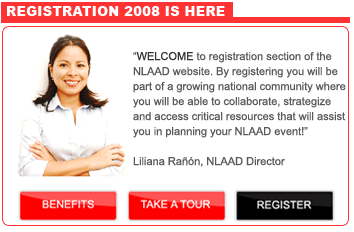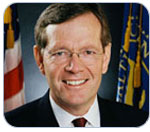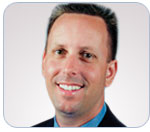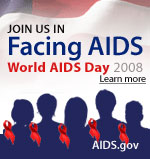Podcast Promotion Tips from Apple
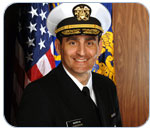
Admiral Joxel Garcia, Assistant Secretary for Health

Pete Alcorn, Podcast Manager at iTunes. Photo courtesy of Personal Life Media on Flickr
Last week, Miguel Gomez, Director of AIDS.gov, sat down with Admiral Joxel Garcia, the U.S. Assistant Secretary for Health for the U.S. Department of Health and Human Services (HHS), to record a podcast about health and the Latino community in the U.S. As we mentioned in a past blog post, and in our “New Media Toolkit,” podcasts can be a simple way to gather and provide audio and/or video information to your target audience. But once you have created them, how can you help people find and subscribe to your podcasts?
To help us answer this question, we turned to Pete Alcorn, Manager of Podcasts at Apple’s iTunes,  the largest podcast directory and the most common venue for people to subscribe to podcasts (Note: there are many other directories, including Zune,
the largest podcast directory and the most common venue for people to subscribe to podcasts (Note: there are many other directories, including Zune,  Odeo,
Odeo, and Podcast Alley
and Podcast Alley  ). Miguel and our colleague Fred Smith from the U.S. Centers for Disease Control and Prevention met Pete at the New Media Expo in Las Vegas last summer.
). Miguel and our colleague Fred Smith from the U.S. Centers for Disease Control and Prevention met Pete at the New Media Expo in Las Vegas last summer.
Pete recently gave a presentation to our HHS Podcast Subcommittee, which consists of representatives from many Federal agencies. He shared several techniques that may help people discover, listen to, and subscribe to podcasts.
Three Key Ingredients to Helping People Find Your Podcasts
-
Good and Regularly Updated Metadata
Most people find podcasts by searching the iTunes directory, so Pete told us if your podcast isn’t on iTunes, you’re missing out on a large audience. In order to submit your podcast to iTunes (or any podcast directory or subscription service), you need to create an RSS feed as an XML file
 (Apple provides detailed information about how to create and submit a podcast
(Apple provides detailed information about how to create and submit a podcast  ). He emphasized the importance of good “metadata”
). He emphasized the importance of good “metadata”  -- information (e.g., title, author, description, and keywords) that is embedded in the XML file. This is the information that helps people find and determine if they want to listen or subscribe to your podcast. Pete told us that the most important thing you can do to help people find your podcast is to have good metadata and to update it regularly, especially if your podcast includes a notable speaker or timely topic.
-- information (e.g., title, author, description, and keywords) that is embedded in the XML file. This is the information that helps people find and determine if they want to listen or subscribe to your podcast. Pete told us that the most important thing you can do to help people find your podcast is to have good metadata and to update it regularly, especially if your podcast includes a notable speaker or timely topic. -
Clean and Simple Podcast Artwork
Pete also underscored the importance of having good podcast artwork (the image that appears on your podcast’s iTunes page). There are more than 100,000 podcasts indexed on iTunes, so people scan the graphics in the search results to determine if they want to listen to or view a podcast. Pete told us, “You need a very clean, simple piece of art that includes your logo and a short, recognizable title.”
-
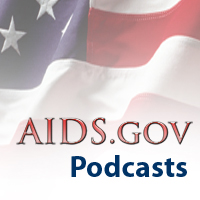
AIDS.gov iTunes artwork
Podcast Promotion Beyond iTunes
For your target audience, finding your podcast on iTunes is one important piece of the puzzle -- but being able to find it on your website is also critical. Pete pointed out a common mistake for podcasters: having the attitude that “if you build it, they will come.” With so much competition out there, podcast producers must take a proactive approach to promoting their podcasts. Pete mentioned that the podcast for This American Life
 is always on iTune’s Top Podcasts chart because the show’s producers relentlessly remind their audience that they can subscribe to the show as a free podcast, take it with them, and listen to it whenever they want.
is always on iTune’s Top Podcasts chart because the show’s producers relentlessly remind their audience that they can subscribe to the show as a free podcast, take it with them, and listen to it whenever they want.
 At AIDS.gov, we have tried to make our podcasts easy to find by having a direct link to our podcast page from every page on the AIDS.gov site. We also use the podcast icon to help people quickly navigate to our podcast page where they can then subscribe to our podcast RSS feed. In addition, we promote our podcasts at meetings and conferences, and now on our blog (we started creating audio versions of our blog last month).
At AIDS.gov, we have tried to make our podcasts easy to find by having a direct link to our podcast page from every page on the AIDS.gov site. We also use the podcast icon to help people quickly navigate to our podcast page where they can then subscribe to our podcast RSS feed. In addition, we promote our podcasts at meetings and conferences, and now on our blog (we started creating audio versions of our blog last month).
Fred Smith told us that the CDC promotes its podcasts by having links to a podcast directory on the CDC home page and second-tier pages of the CDC website. Specific podcast episodes are linked to and referenced from relevant content pages. CDC also lists podcasts with iTunes, Zune, and other podcast directories, as well as on the main HHS website. In the future, Fred told us, the CDC hopes to do a great deal more cross-promotion of their podcasts on other governmental websites.
The Future of Podcasting
We asked Pete what’s next for iTunes? “Bigger, better, faster,” was his response. He told us that iTunes’ philosophy is to help people discover podcasts and “then we get out of the way and you serve the content straight to them.” He continued, “Gradually, more and more people will figure out that podcasting is a highly efficient way to deliver audio and video of new information and to educate their audiences.”
Are you podcasting in response to HIV/AIDS or other public health topics? Have you embraced iTunes or other podcast directories? We’d love to hear about your experiences.

